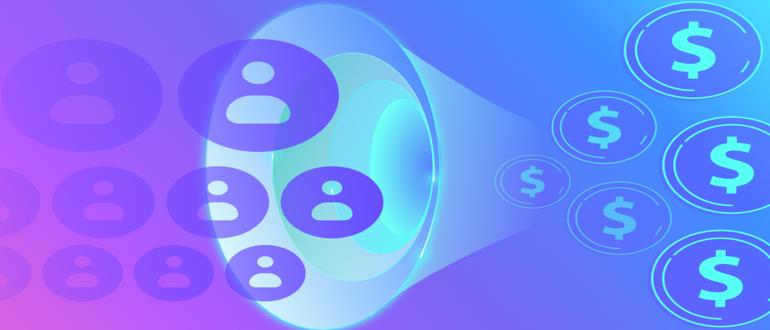
As artificial intelligence (AI) continues to innovate at a speed that we’ve never seen before, the traditional all-human workforce is on its way out.
We are at a defining moment in the evolution of the workforce–and CEOs need to be proactive about what their organizations look like now in order to prepare for this shift that isn’t waiting on anyone.
AI Agents are now frontline team members, working alongside humans to drive revenue, give buyers smoother, faster experiences and reshape entire business functions.
The State of the AI-Human Workforce
Agentic AI has taken all of the infinite scalability of large language models (LLMs) and turned them into operators for vital functions of our businesses, and they’re working.
Frontline communications with brands are now entirely up for automation. AI agents are not just super-charged chatbots. They’re autonomous. They have real-time reasoning abilities and can react and engage with your website traffic the exact same ways human reps can, which explains why buyers increasingly prefer AI-powered self-service options, with 81% favoring them ahead of interacting with humans (SellersCommerce).
If this is how our buyers are using AI agents in their day-to-day service interactions, we know those expectations will translate into B2B sales.
But AI Agents can’t do it all. We’ve all seen the bad AI-produced outbound messages floating around LinkedIn, or we’ve run into situations where human nuance is crucial.
Rethinking Your Org Structure
It’s time to stop dancing around it–Automation of roles that do not require humans is inevitable. So now is the time to start carving out new paths and skillsets for your teams.
The roles that will be automated are the ones that have clear, repetitive rules and steps to accomplish. These include the roles we think of as entry level–junior engineers, inbound sales reps, tier-one customer service agents, and so on.
There are three major shifts ahead for org structures–role automation, role creation and hybrid modeling.
Role Automation
Role replacement in the wake of technological advancement is nothing new. The rapid pace of this next wave of automation is going to feel bigger–but we’ve always had to shift our priorities as businesses with each new era in tech.
However, that doesn’t mean your human reps just go away. As business leaders, it’s time to think bigger for these roles and create higher-level jobs that let humans shine in ways they can’t, if they’re chained to repetitive, time-consuming tasks.
Role Creation
This is the exciting part of role automation–when we no longer need humans to work mundane tasks, we can create more strategic roles that drive our business goals forward in ways we never dreamed of. AI agents are skilled at execution, but they will always need human minds to provide guidelines and additive strategies.
For example, a company’s entire inbound pipeline generation can be migrated to an AI sales development rep (SDR). Separately, several new roles for the replaced inbound reps can be created to provide oversight. (While AI SDRs can work leads autonomously, human oversight is key to success when it comes to keeping their information up-to-date and ensuring they hit quota.)
These new AI SDR managers can oversee automated sales motions (much like a Lifecycle Marketer oversees marketing automation platforms), and additional replaced reps can strategically work outbound leads or manage their own territories, depending on their individual career path.
“These new era AI GTM [go to market] roles aren’t all that different from managing people—coaching, optimizing, and analyzing performance play out in similar skill sets. The difference is the scale. Instead of managing a team of a few human SDRs, you’re honing your management skills on an infinitely scalable team, and immediately resolving former capacity constraints,” shared Qualified’s AI GTM Operations Manager, Rich Campbell.
These roles will emerge outside of the GTM org as well. Roles like AI Compliance Officers and AI Performance Analysts will become vital to understanding and adapting to these new technologies.
Human-AI Hybrid Business Modeling
To get the most efficient blend of AI agents and humans, the models used for forecasting and revenue reporting will have to be completely re-thought.
This is a whole new ballgame when it comes to setting pipeline targets and sales quotas, and reporting on revenue, as well as developing compensation structures and incentive models.
AI agents will reshape every aspect of our business for the better, but it will take time to find the right models to account for all of these fundamental changes across our orgs.
The Future of Leadership in the AI Era
Today’s CEOs are managing AI-augmented workforces with hybrid teams and models. The massive revolution we’re seeing levels the playing field in a lot of ways in the tech space. The CEOs who embrace this shift and execute quickly on re-thinking their business structures and integrating AI agents in strategic ways will leave the teams resisting the change behind.
It’s time to ask yourself: Is your workforce ready for the AI revolution? Because AI agents aren’t coming–they’re already here.

